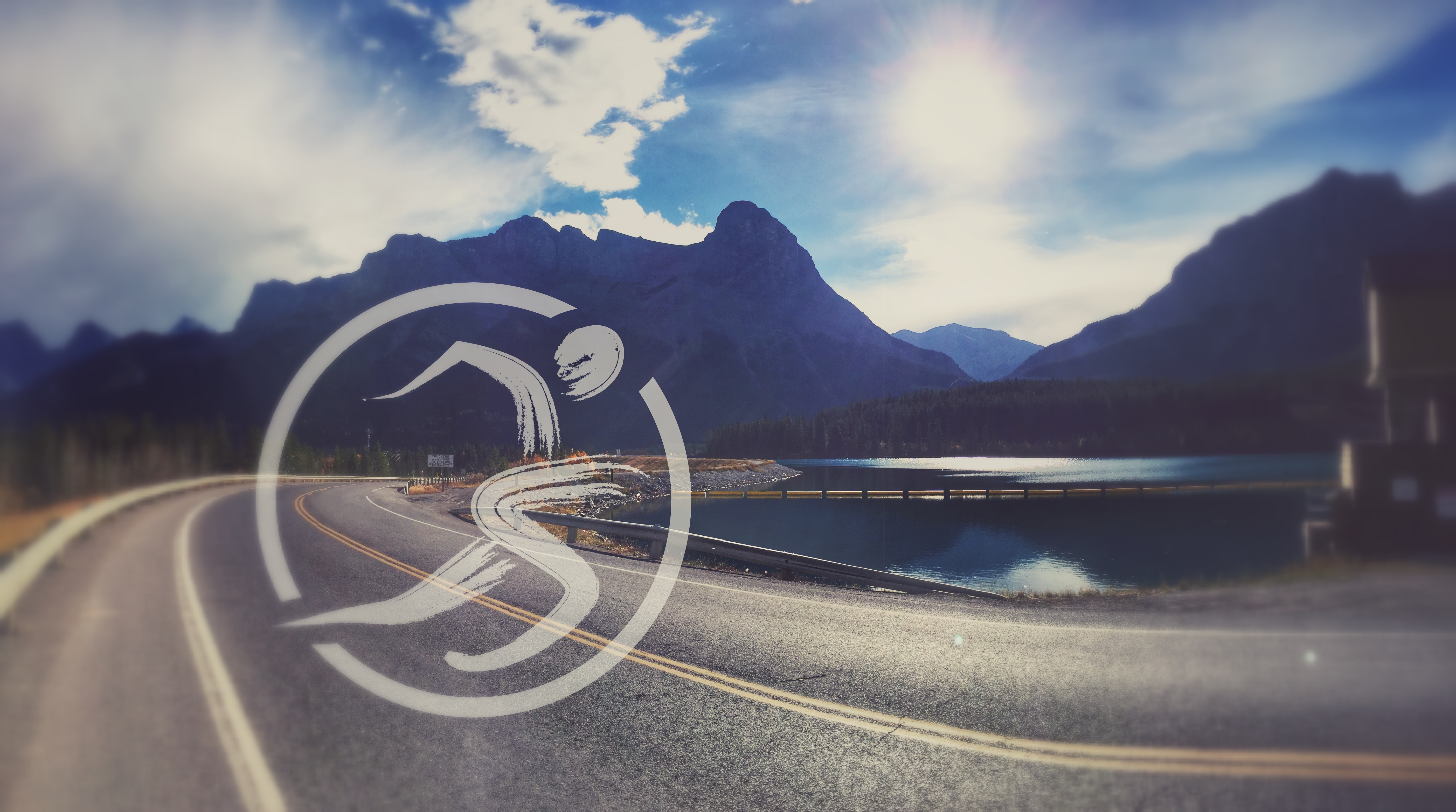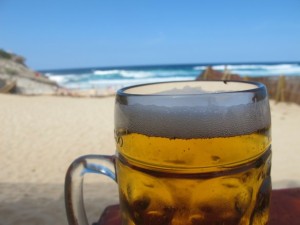Just like every summer in Tokyo, right after the raining season ends, a massive heat wave comes right onto our face, making our easy runs feel like crap and our tempo runs nearly impossible (not even mentioning long runs). Your pace is out of the window, your perceived rate of exertion is through the roof, you feel sluggish all the time, you lose liters of sweat on each run. Well, in a word, it just sucks !
But just as every time we put ourselves out of our comfort zone, our body adapts and we have a lot to gain in return. I’ve gathered below some facts and tips on how to go through Summer
- You sweat more efficiently
As you know, we sweat in order to maintain our core temperature under control. It is the water evaporation on the surface of your skin that cools you down. That explains why it is much harder to exercise in a humid environment simply because the air is already saturated of water so our sweat cannot evaporate as efficiently as in a dry area. When first exposed to heat, we sweat more and loose more sodium and other electrolytes than needed. After acclimation, our sweat rate decrease and our body will lose less electrolytes.
- You get many physiological responses
Because your runs become much harder – especially during the first few days – until you get acclimatized, your body is going through many physiological adaption in response to the weather so that you don’t feel as crappy. Here is a non-exhaustive list know to date
- Lower core temperature at the onset of sweating
- Increased blood volume (aka plasma volume expansion) up to 27%, which leads to:
- Improved exercise economy , greater cardiac output, higher VO2max and hence, improved performance
- Decreased core body temperature
- Adaptation to exercise in a hot environment
- Your fitness and level of hydration will affect your speed of adaptation
The higher VO2Max you have, the higher the chances are that you’ll adapt quicker and better. Now this is only from observations so if you’re on the lower spectrum of the fitness scale, you’re not necessarily screwed. Now one of the key signals that tells your body that it is time to make some change is your hydration level during exercise. The more “dehydrated” you are, the faster the response will be. That does NOT mean that you have to run 30k at noon with zero water. You don’t have to run to the point of fainting. What it means is that if you go for one hour run in your neighborhood in the evening or in the morning, and if you feel a bit thirsty in the middle or the end of the run, it’s ok. You don’t have to stop and get a Poccari Sweat ! Just finish your run and drink to thirst when you go home. The consensus of all the studies is that it takes from 10 to 15 days to acclimatize with the biggest changes occuring within the first 5 days (assuming you run regularly, say at least 4 times a week – if you run only once a week then sorry…. You will suffer longer)
- You lose the acclimation benefits as fast as it took you to get it.
Unfortunately, our body is by nature “lazy”. It adapts to stress but it also detrain under more forgiving conditions. So if you stop training in the heat. You will lose all the super-compensation gained during training in the heat in about 10 to 15 days.
- It also comes from your head
A study conducted in 2011 had cyclists perform a time trial at the same hot temperatures, but were told wrong figures (e.g. the room was 30deg and some were told it was 35 and others 27). Those in the group of “27 degrees” performed better. Now I’m not saying that running when it is 35deg is all in your mind ! My point is that if you hate the heat, then you might find it even more difficult than it actually is, the psychological component is bigger than one might think.
How to get the most out of Summer
With all that said, one thing you can do to get the most from summer training would be –ideally- to plan a race in a cool place by the end of the summer/ beginning of Fall. In other words, you want to schedule a race where the conditions are cool while it is still hot where you train. Because we “lose” all the specific fitness we gain from training in the heat in about two weeks, planning a race right at the end of summer for example in a cool/cold area will let you go the start line with all the benefits from heat acclimation. It is quite similar to altitude training. You train at altitude and race at sea level, but you come back at sea level just before the race so you don’t lose the physiological adaption from altitude training.
Training for your A-race
Training adaption comes into two forms: Central and Peripheral. I won’t go too much into the details but in short, Central Adaptation refers to your cardiovascular system. Cardiac output (the amount of blood your heart is capable of pumping per unit of time) is one of them. Your heart is there to serve your muscle tissue, it will provide oxygen supply by sending blood to your working muscles. Training in the heat will make your heart stronger and this is the MAIN adaptation you get. The engine of your car if you will
Peripheral adaptation: the wheels of your car. How efficiently your legs will use the energy sent by your heart, how long they can sustain the energy requirement etc which depend on things like Mitochondria density, Capillary number and recruitment fall into the category of Peripheral fitness. In other words the muscle tissue and vascular structure that the heart is actually delivering oxygenated blood to and through.
To improve your running, you need to improve both aspects: Central and Peripheral. This where heat training comes with a shadow. Here is why: running easy in the heat is manageable, you will gain central adaptation just by running your base mileage, but you do little to improve your peripheral fitness. To race at goal pace, say Marathon pace, you need to train at goal pace. The most critical factor that will lead you to a successful marathon is the time spent at that specific pace (again, specificity principle). Short/ intense workouts (track intervals) and long easy runs are doable during summer but long tempos are another story. Running at Marathon pace feels like running at Half marathon pace or even 10k pace and quality miles are the ones that will make your training complete.
Long tempos during summer

One strategy one can use is to break your run into pieces and incorporate back to back long runs /tempo intervals. When I say back to back, I mean the first run in the evening and the next one immediately the next morning, with only one dinner, a small breakfast (or not), and a good night sleep in between. An example would be to run a 15k-20k run on Saturday evening with as much goal pace miles as possible and a long and steady run the morning after (15 to 30k). Assuming you run outside in the hot weather, you could break your tempo run into a 4 x 3k @ goal pace for example and build up from there week after week.
After a certain point, it might turn too difficult to sustain your goal pace in the heat without impacting the quality of your run. If that happens – for me usually in the final weeks leading to my race – I would switch to the treadmill where the room temperature is around 24 degrees with a reasonable humidity. I know, for most of us the treadmill sucks but I get the job done, and it’s not like I’ll have to do that all the time. I’m talking about at most 3 times all in all before the race. Even though I reckon running on the treadmill like a rat is not fun, but after all the hard training block leading to my race, if I have to meet the gym only 3 times to make it complete, I’ll take it gladly ! Of course this is only one strategy among others, I’m not pretentious to the point of saying this is the only way to do but at least it worked for me.
Back in 2009, I trained during the whole summer in NYC, every single day was hot and humid. My A race – Chicago marathon – happened to be one week after the temperature suddenly dropped on the East coast, particularly in Chicago where it went from 25deg the to 2 degrees in one week! My longest run at goal pace was 16k @ 4:45. On race day I finished in 3:19 (4:43 pace)
In a nutshell
Whether we like it or not, there’s nothing much we can do about the weather (I know it sounds stupid). Above and beyond all the boring stuff I just wrote, ultimately it is how you perceive the challenge that will take you through it. The first step to exercise in such hard conditions is to cope with it, or shall I say, to suck it up! But then I believe rather than cursing it, if we learn to embrace it instead, the path will be much smoother. Rain has become my friend and for many people, beer never tastes so good !


Fantastic article as always Harrisson. I will try and do more tempo runs in the heat or at least long intervals before Dublin.
Tkx man, I really hope you will PB by a good chunk in Dublin, this is long due !
Thanks for the article. I also believe the pyschological aspect is important. Embracing the heat is exactly what I do. (It helps that I hate cold weather.)